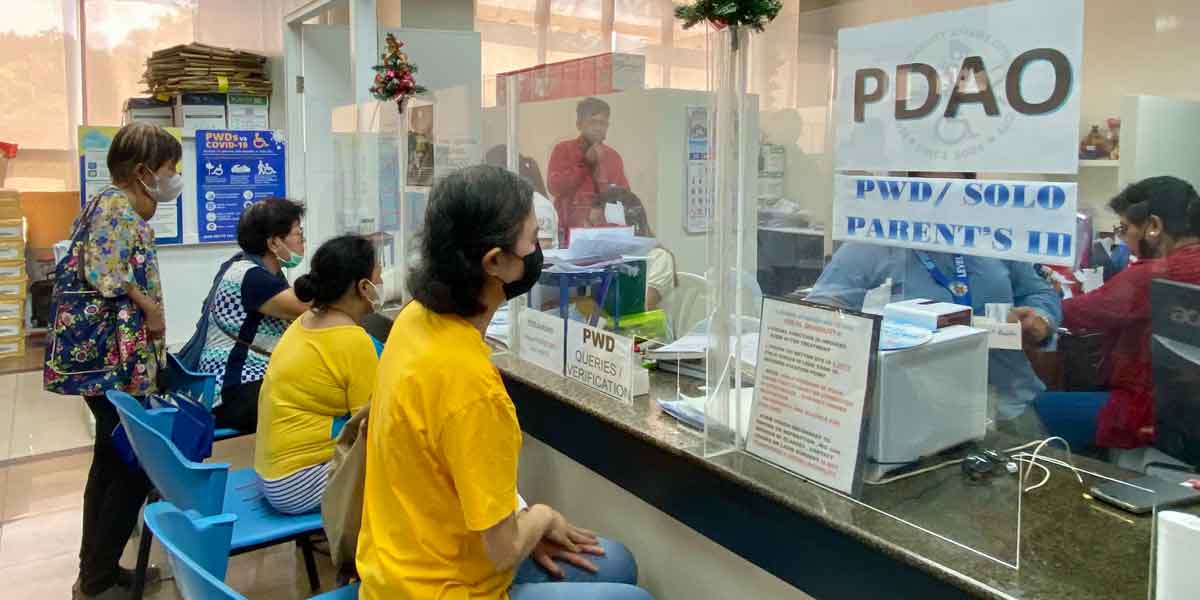By Jaime Aristotle B. Alip, PhD
2021 was a difficult year, foreshadowed by a shrinking national economy wrought by the COVID-19 pandemic. With poverty level at an all-time high, the attendant social ills — crime, hunger, poor access to education and social services, discrimination, joblessness, and a host of other problems – pervaded our life. Then, as if the COVID-19 scourge weren’t enough, the year ended with millions of Filipinos struggling from the devastation unleashed by Super Typhoon Odette across Visayas and Mindanao.
January ushered in 2022 with a surge in COVID-19 cases from the highly transmissible Omicron variant. With the declaration of Alert Level 3 in Metro Manila and other regions, we were off to a difficult start. Still, I believe the indomitable spirit of the Filipino will see us through these challenges. After all, we are still here. A little worse for wear, true, but we have a fresh start in 2022.
Here are the reasons we can be hopeful even as shadows loom:
Reason #1 – on the Pandemic Front, 2022 is not “2020 too”
First, while we a grappling with a Covid-19 surge that has accelerated at a pace not seen since the pandemic started, Omicron seems to be a milder form of the virus. Unlike Delta, this latest variant required fewer hospitalizations, severe illnesses, and deaths. Unlike in 2020 and 2021, many of those who test positive now have mild symptoms and allowed to recover at home, even as measures are being undertaken to curb the spread of the virus.
Anti-COVID vaccines have also reshaped the risk landscape of COVID-19, and this is why experts are calling for wider and more equitable access to vaccines around the world. At present, 55.2 million Filipinos are fully vaccinated, equivalent to 70 percent of the adult population and half of the total 110 million population. The government is confident that it will meet its target of vaccinating 77 million adults by May. This seems possible, with booster shots now available to citizens in hospitals and clinics, schools, community vaccination sites, malls, and in a few weeks, even pharmacies. The rollout of vaccination to children ages 12 to 17 years is underway, and the government is already preparing to inoculate children aged 5 to 11 years. If the pace of vaccination continues, it is likely that we would reach herd immunity in a year or two.
There is community transmission, but Omicron cases seem to be on the downtrend, with the peak expected in February. DOH raised the total number of cases to 3,270,758 in January 18, but the daily tally of active cases is decreasing from the all-time high of nearly 291,000. While we are not yet out of the woods, Omicron has peaked in some countries, showing signs that there is an end in sight. We just need to ride out this wave, but we will get there.
Reason #2 – we are learning to live with COVID-19
Even as we are dealing with the current surge, the country is moving from a pandemic to an endemic mindset. Unlike in previous years, there is better government response. Aside from the vaccination drive, the government has refused to impose a total lockdown. The alert level system and granular lockdown seem to be working, containing mobility only in areas with high COVID cases.
There is now greater flexibility, with talks of changing the primary metrics to monitor the pandemic, the removal of artificial barriers such as categorizations A1 to A5 and unnecessary filling up of forms, shifting to targeted contact tracing, and shortening of quarantine days. There is also a willingness to listen to a pandemic-weary public, with the exemption of workers from the “no-vaccine, no-ride policy,” the opening up of vaccination registration (rather than taking punitive measures) for the unvaccinated, and the release of benefits for health care workers.
Our health care system is also better prepared this time, with the DOH and hospitals taking preparatory measures to brace for another COVID surge as early as November. Clearly learning from painful lessons after two years of the pandemic, the health care system anticipated the possible rise in cases, with government officials, hospital administrators and health experts reminding the public to observe safety protocols – even as they hired additional staff and buffered systems and facilities.
Of course, people’s response is a key factor, and the Filipinos’ willingness to get vaccinated, their observance of minimum health standards (such as the use of face masks), self-quarantining, and looking out for others in various ways is very telling. Amidst harsh realities, the social media is full of posts about people finding ways to help their fellowmen cope – from sending of material help, to calling out government, to reminders and admonitions for everyone to follow safety protocols. This dogged response to survive amidst COVID-19 is the best sign that we will see these through.
Reason #3 – the economy is recovering, and the forthcoming election promises change
There are indications that the Philippines will continue its recovery in 2022, despite Covid-19 as vaccination rollout and economic developments expand. NEDA reported our lowest monthly inflation rate for 2021 in December, (down to 3.6 percent from 4.2 percent in November), with the decline driven by slower food inflation. This is good news, showing that even as temporary restrictions are imposed to contain the spread of Omicron, we have learned to manage the risks and live with the virus.
And on this backdrop the nation will elect its new set of leaders in May 2022. It is an opportunity for all of us to pursue our dream of a better Philippines. Selecting good leaders is the first step towards building a country with strong social institutions that will protect those who have less in life, where the government enables us to provide for the needs of our families and live in harmony with one another. Let us choose wisely.
A new year always bodes changes. For us, 2022 could be a reopened road that could lead to a better future. With the shadow of COVID-19 still looming, the road is paved with stones, similar to the obstacles and challenges we faced in previous years. But we are now armed with lessons. With fresh eyes, let us face 2022 with a view to changing the pavement of the road we travel on. We can help each other clear all the stumbling blocks and cast away deadweights. One stone at a time.
________________________________
Dr. Jaime Aristotle B. Alip is a poverty eradication advocate, with more than 35 years of experience in microfinance and social development. He is the founder of the Center for Agriculture and Rural Development Mutually Reinforcing Institutions (CARD MRI), a group of 23 organizations that provide social development services to 7.8 million economically disadvantaged Filipinos and insure more than 27 million nationwide. CARD’s innovative financial and enterprise development services targeting the poor has won many accolades, including the Ramon Magsaysay Award for Public Service in 2008, and for Dr. Alip, the prestigious Ramon V. del Rosario Award for Nation Building in 2019. Dr. Alip is an alumnus of the Harvard Business School, the Southeast Asia Interdisciplinary Development Institute, and the University of the Philippines.




















